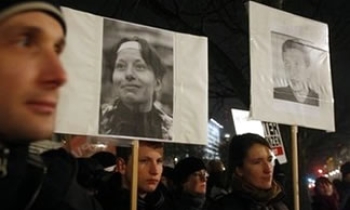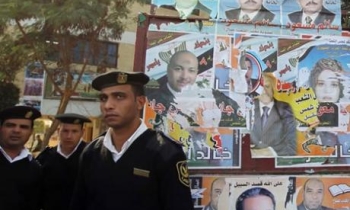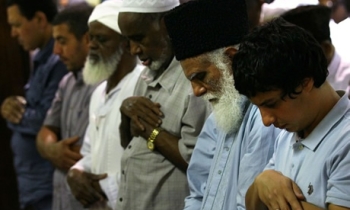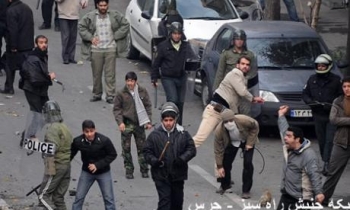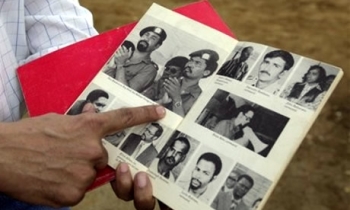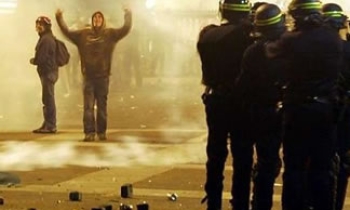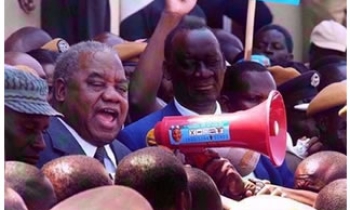Two journalists were bruised by Israeli stun grenades at an Israeli military checkpoint between Jerusalem and the West Bank city of Ramallah Thursday.
Rami al-Faqih, a correspondent for the local Al-Quds Educational Television, and Iyad Hamad, a cameraman for the Associated Press, were each hit as Israeli border police fired at journalists covering a peaceful protest marking International Women’s Day at the Qalandia checkpoint, the journalists told the Committee to Protect Journalists (CPJ).

“We are troubled by these reports that the Israel border police deliberately fired at journalists,” said CPJ Executive Director Joel Simon. “We call on Israeli authorities to thoroughly investigate this incident immediately and to instruct its forces to allow journalists to do their job unhindered.”
Al-Faqih, who said he was holding a microphone with the station’s logo, told CPJ he was hit in the foot and fell to the ground. Iyad Hamad, a cameraman for AP, was similarly injured when he was hit in the legs by a stun grenade, AP photojournalist Nasser Shiyoukhi told CPJ.
The journalists alleged that Israeli border police fired deliberately at them, and noted that none of the protestors were hit by the grenades, which they said emits plastic shrapnel. Video footage, they said, showed that the journalists were not among the demonstrators.
The Army denied the charge and said it would investigate the incidents, according to a AP report. The military “does not intentionally harm journalists, and any such claims on this matter are baseless,” a military statement said, adding that there are “inherent risks to journalists” covering combat operations.
While agreeing that the military did not have a deliberate policy targeting journalists, Daniel Blumenthal, vice chairman of the Foreign Press Association (FPA), told AP that there are numerous complaints. “We assume some soldiers act on their own initiative because of their idea about where a journalist should be (during) an event.”
Police spokesman Micky Rosenfeld told CPJ that border police used minimum force — only three stun grenades — to disperse protestors when they forcefully tried to enter an area that was “out of bounds.” Rosenfeld said that after the Israeli border police asked demonstrators to disperse from the closed area, “the press should have left the area quietly and dispersed with the ladies who were present at the scene” to maintain their safety and prevent injury.

Rosenfeld added that no official reports were filed with the border police by the media organizations regarding the journalists’ injuries.
Israeli soldiers and border police have previously used stun grenades against journalists. On February 26, Israeli soldiers fired several stun grenades at a group of 12 photographers and cameramen, including Nasser Ishtayeh and Emilio Morenatti of the AP and Jaffar Ishtayeh of Agence France-Presse, to prevent them from covering its search and seizure operation in the West Bank city of Nablus, CPJ said.
FPA protested the Nablus incident, calling it "obstruction and ill treatment of journalists." Morenatti suffered a broken leg from a fragment of a stun grenade, thrown from a distance of about two meters (yards) while he was covering a protest in the West Bank village of Bilin in January.
On February 16, Israeli soldiers fired teargas at several cameramen and photojournalists covering clashes between the soldiers and Palestinian stone-throwers near the West Bank city of Hebron, according to AP’s Shiyoukhi and journalists at the scene.
When the journalists came within 30 metres of the Palestinian youths, Israeli soldiers fired teargas canisters at their feet. Shiyoukhi told CPJ he was overcome by the gas and his colleagues brought him to a hospital in Hebron. Shiyoukhi alleged that the Israeli soldiers fired deliberately at the journalists since they were a clear distance from the Palestinian stone-throwers.

